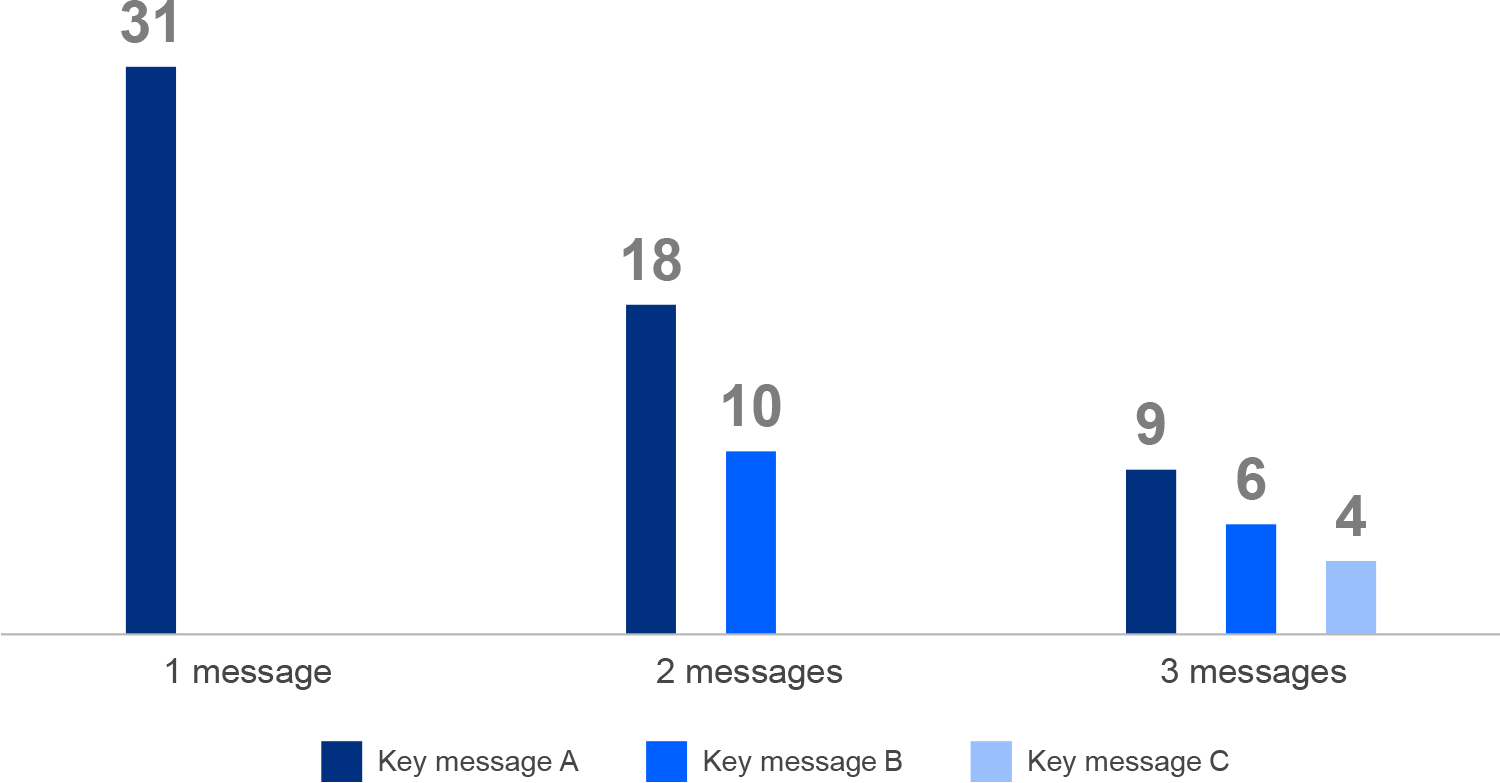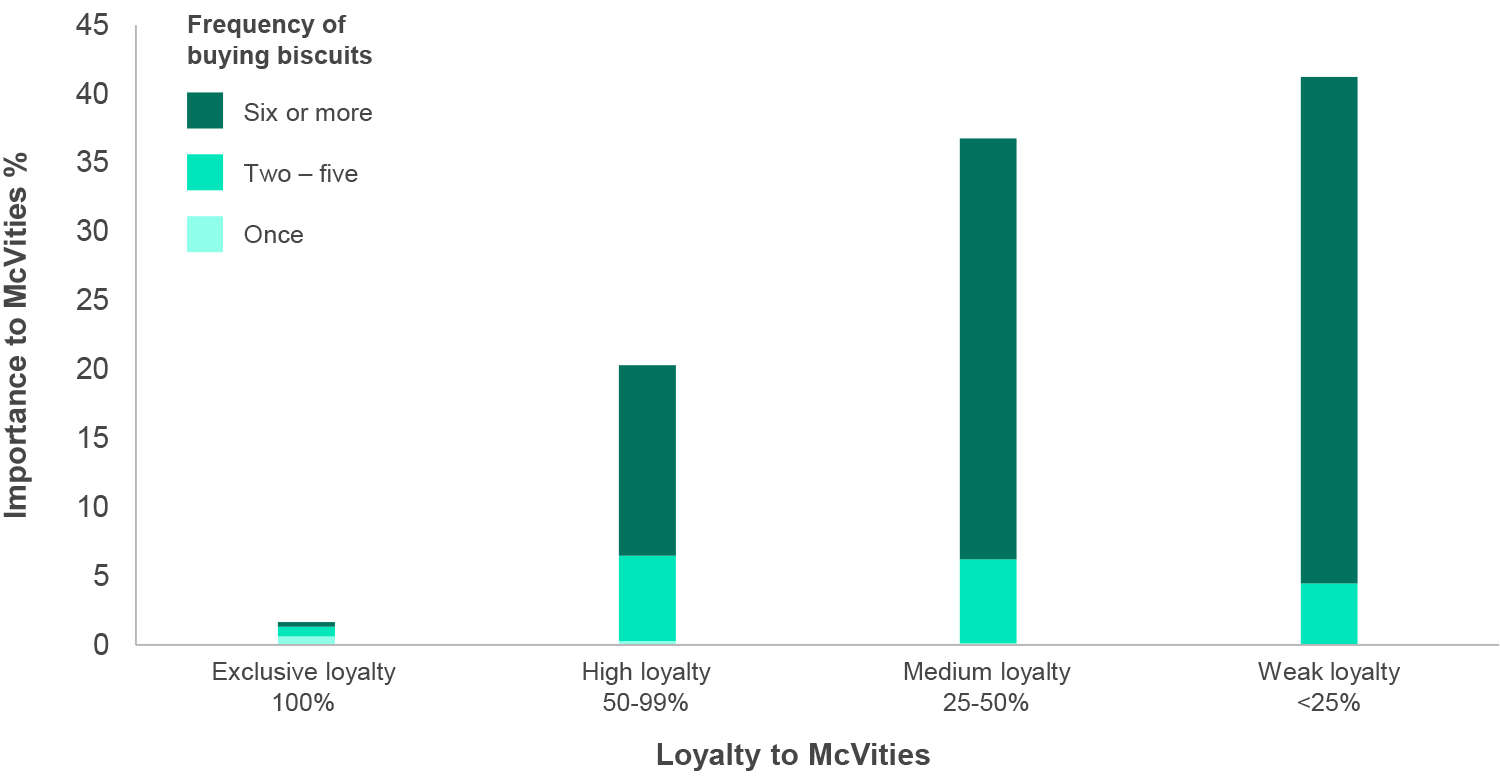Throughout our brand equity thought leadership series we’ve looked at what it is, why and how to measure it, how to build powerful brand associations and alter consumers’ perceptions, why emotion should underpin all that a brand does, along with the role of media and brand touchpoints in driving effectiveness. This amalgam of musings laid out the red carpet for brand strategy. This final article examines just how close brand strategy is to a marketer’s heart and reveals five strategic components that will build and/or improve your brand’s equity. But remember one thing: the end of this series doesn’t signal the termination of our journey; our hunt for brand equity truths continues, and we remain committed to sharing them as they come to light.
It’s good news: marketing is reclaimed as a key driver of business
Marketers have added a noticeable swagger to their step. After months of cutting back on marketing, the discipline has bounced back and repositioned itself centre stage of the business. Marketing spending growth has returned to historic levels with the projected growth promising to smash the last decade’s trends. It is therefore unsurprising that marketers feel their job has increased in importance. However, the striking truths emerging from the same CMO survey results are that brand remains their primary focus and that building brand value is now perceived as their most important objective.
The challenge? Never in their careers have marketers experienced a consumer change of this magnitude and such nuanced, disorderly and complex newly formed consumer journeys.
Yet the subject of interest (i.e., the consumer herself) has retained one major characteristic: her polygamous behaviour towards brands. Don’t fret; there is order in the chaos. Although what follows is not a comprehensive guide to brand strategy, there are a handful of principles that offer stimulus and direction. Each one will lay a foundation for growth and take you a step closer to stronger brand equity.
Five strategic components that will drive growth
1. Insights and tactics make a strategy sandwich
Insights come first, before strategy. Though not all types of insights will do. Insights that serve as the company’s imaginative golden thread spark the corporate imagination and kindle bolder bets are a business’s secret sauce of success. Kantar Insights 2030 research found that companies that have embraced imagination use both insight and foresight to advance originality and significantly outperform the competition.
Insights should be used to tell you where to play, to create springboards and surprise you with new ideas, not to confirm pre-existing ones. “We work hard to find the tensions that we can help resolve,” P&G’s ex-CEO Bob McDonald explains. “From those tensions come insights that lead to big ideas. Those big ideas can be the basis of a powerful ‘where to play’ choice.” When Walkers and KFC joined forces at the beginning of 2021, for instance, it was because they carefully ‘listened to consumers’ Fernando Kahane, Walkers' senior marketing director, admits. This was a listening strategy that paid off for Walkers; sales soared, and brand equity saw its highest increase in five years. It’s the right insights that give your strategy wings and fuel growth.
Tactics come last, after strategy. Fast-forwarding now to tactics (for the sake of this narrative and exactly what we are advising you not to do), imagine that they are like the Sirens in Greek mythology. If you give in to their enchanting music, your hasty plan will shipwreck on the rocky shrine of your strategy. Or in simpler, modern marketing terms: “Any approach, that begins with the tactical focus before first establishing the strategic focus, is inherently flawed,” Mark Ritson says. “If you’ve already decided the answer is digital, you are going to try and find as many ways to answer whatever questions there may be with that pre-existing answer and that’s the wrong way around.”
2. The 3Cs of positioning demand re-prioritisation
Brands are commercial instruments to help people choose your offer over something else. As a marketer, part of our job is to create that priming mechanism, to build the memories that help our brand to be chosen. We do this by answering these three simple questions and smashing our positioning:
a. who is it for? (Consumer),
b. can we walk the walk? (Company and brand itself),
c. why is our product/ service different/ better? (Competitors).
Common sense, but not always easy to do.
Leader in positioning and author of ‘Obviously Awesome’ April Dunford puts it nicely, in a mouthful but all-inclusive description: “Positioning defines how your product is the best in the world at delivering some value that a well-defined set of customers cares a lot about. Like the opening scene to a movie, it’s context-setting…but for products.”
Fighting for the consumer’s mind is hardly a new phenomenon. Jack Trout and Al Ries declared an “over-communicated society” back in the 70s with sharp positioning rising as the manna from heaven to “cut through the clutter and get into the mind.” How?
3. Less is more
As we look for ways to build memories and cement pre-disposition in consumers’ minds, coherence and clarity remain significant enablers across touchpoints and over time. Using Kantar’s Link database, we investigated the percentage of people who play back each of the key messages in ads that have 1, 2 or 3+ messages.
One message in an ad has much more impact than multiple

Source: Kantar Link database, US TV ads
The findings were a clear plea for simplicity. Too many messages can dilute communication as our brains can only really think about 3-4 things at once. So, in essence, the more messages an ad attempts to communicate, the lower the likelihood any single message will be communicated strongly. And although the results are somewhat varied by type of ad - TV or static - and by market, there was consensus that to successfully communicate a product benefit, we need to keep it simple and avoid too many messages. This is advertising 101 really, but with the rise of digital, it got lost in some places.
4. Conquer the art of staying consistent and relevant in a moving environment
“Consistency demands change.” Mark Ritson urged us to acknowledge this as a core paradox of branding when he made the case of revitalisation vs. rebranding for The National Lottery. And this is not an isolated case. More and more brands take account of their cultural milieu, and act and react accordingly. “My competitors aren’t Levi’s or Balenciaga. My competitors are the gym, Netflix. Diesel has to be a part of your life. We want to have a physical presence and a cultural presence,” admits Diesel's CEO Massimo Piombini.
Other brands aim higher and become a source of hope for our society. Sharing her thoughts in our Kantar BrandZ 2021 report, Lynne Biggar, Executive Vice President & Chief Marketing Officer at Visa, de-coded the company’s growth enablers that are good for the soul and keep their shareholders happy. From helping under-served individuals access digital payments and offering financial literacy programmes in 30 countries to digitally enabling small and micro-businesses around the globe, Visa took massive leaps in imagination and faith in pursuit of a fairer, more equitable, more inclusive society... and thrived in the process.
Others again waited patiently for a cultural opportunity to present itself, to triumphantly time their return. OkCupid might have lost its connection to younger daters when Tinder captured the imagination of millions, but the tables turned when Tinder fatigue kicked in and they offered “the antidote to superficiality.”
Uncovering your business’s buried treasures isn’t always down to strategy by the way, but also luck. OkCupid was lucky in the way the culture moved, but then had the agility to recognise and respond to that opportunity. Andy Nairn, rather entertainingly, talks exactly about how to jump into the strategy gaps fearlessly in his book ‘Go Luck Yourself’. This is a vivid demonstration of the power of foresight that we mentioned earlier. The art of spotting opportunities in unexpected places and turning misfortune into good fortune shouldn’t go unnoticed.
However you decide to approach the change vs. consistency conundrum, simply don’t stay static. Evolve with the times and maintain your relevance, whilst keeping a vigilant eye on how you are doing against your ambition.
5. Influence your future customers
If you follow the money and align with finance (future cash flows) rather than sales (short-term gains), the brand will come out on top. Prompted by the results of their new research with the Ehrenberg-Bass Institute, Peter Weinberg and Jon Lombardo from the B2B Institute carved a new shortcut to the CFO. Their “95:5 rule” pitch is convincing: “~5% of buyers are in-market and ~95% are out-of-market at any one time. So, the biggest growth opportunity in B2B (but also B2C) is to influence the 95% of ‘out-of-market’ buyers who are not even in the funnel yet.”
And we concur. We analysed more than 5,000 brands over three years from Kantar BrandZ to identify the growth triggers across the buyer lifecycle. What we found was that brands that grew were over-performing in Experience, Exposure and Activation, but the greatest impact came from Exposure. Predisposing more new customers indisputably impacts future sales. In other words, it’s the art of advertising that nudges people to desire your brand before they even need to renew their choice or before they buy the category for the first time. Future sales will come from “making it easier for people to choose your brand and pay the price asked when the time comes to buy,” as Nigel Hollis says.
Despite the compelling data, the majority of marketers tend to fall back into a low-risk, low-gain strategy. 73% of CMOs admitted in the Gartner CMO survey that their primary focus to fuel growth in 2021 was to increase sales from existing customers.
But there is no need to roll the dice between current and new customers, as target segments and mass marketing are not binary alternatives, Les Binet and Peter Field have proven. Their analysis of the Effie award submissions revealed that sophisticated mass marketing works best – allowing for that memorable connection brands can create with brand building.
So, the next time you dunk your biscuit, think of this random, fun and highly relatable fact from our consumer panel analysis: £4 in every £5 spent on McVitie’s comes from less loyal shoppers. They are there to shop, but they keep their options open. Building that reciprocal relationship that exists at a much more watered down level can lead to repeat purchasing. Predisposing new customers will boost future sales.
Attracting high frequency shoppers is more important than particularly loyal ones

The tiny little issues of time and data
It’s complicated. Leaders’ relationship with strategic thinking is a head scratcher. They claim they lack the time for it, yet they know it’s crucial to the organisation’s success and are keen to make more time for it. What’s holding them back?
It could be the fact that nearly half of advertisers (and a similar proportion of marketers too) feel ill-equipped to make decisions in their roles. In Kantar’s Media Reactions 2021 study, professionals in the industry are arguing that the data they need is not there, which is quite ironic really given that more data has been created in the last two years than in the entire history of humanity. Striking evidence that we are a bedevilled industry.
“So many brand strategists. And so little brand strategy.” Bob Huffman wrote in a recent LinkedIn post. Could he be more right than funny?
Disruption: a kick in the pants and a growth opportunity
When the marketplace promises to be one where disruptions are here to stay, operating models are challenged. And the first place to look for growth is not externally, but internally at the structure, skills and competencies it takes to grow.
Strategy often feels like a ghost discipline, missing out on exactly that: the discipline to create it, connect the data dots and go beyond to claim value through differentiation. It takes leadership, creativity and a fair amount of bravery to simply make choices and (if needed) break with conventional ways of thinking.
The pandemic has given us the rare gift of time, big data and analytics have climbed to the top of the corporate agenda; marketing has reclaimed its spot at the centre of the business. The excuses for neglecting strategy are crumbling like a house of cards.
Let’s bring back the magic in brand strategy. Get in touch to discuss further.


